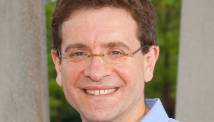STORY HIGHLIGHTS
- NEW: India's prime minister says the public anger is "genuine and justified"
- NEW: Authorities are working to "ensure security and safety" for women, he says
- For a second day, protesters are blasted with water cannons in New Delhi
- Police say a woman was gang-raped and badly beaten on a bus
New Delhi (CNN) -- India's prime minister called for calm Sunday after clashes erupted between police and demonstrators protesting a gang rape in the country's capital.
"We will make all possible efforts to ensure security and safety to all women in this country," Prime Minister Manmohan Singh said. "I appeal to all concerned citizens to maintain peace and calm."
Public outrage has surged after the gang rape and beating of a 23-year-old woman on a moving bus on December 16.
The prime minister's comments came after thousands of protesters defied a ban on demonstrations in New Delhi on Sunday.
For a second day, demonstrators were blasted with water cannons. While some dispersed, others huddled tightly in a circle to brave high-pressure streams in the cold December weather.
"We want justice!" the protesters shouted in chorus.
In addition to banners and cardboard placards, many demonstrators carried Indian flags as they scuffled with police. Authorities fired tear gas to try to break up crowds.
Police spokesman Rajan Bhagat said "hooligans who had joined the protesters" hurled stones, injuring 78 officers.
At least 65 protesters were also injured, he said.
Many police vans and a dozen public buses were damaged during the demonstrations, he said.
As he appealed for peace Sunday, Singh acknowledged that the anger is "genuine and justified."
Authorities haven't released the name of the rape victim, but protesters are calling her "Damini," which means "lightning" in Hindi.
"Damini" is also a 1993 Bollywood film whose lead female character fights for a housemaid, a victim of a sexual assault.
"We support you Damini. We'll keep fighting for you," a middle-aged woman at the historic India Gate said Sunday.
"Damini wants justice," read a placard at the protest.
Police bundled scores of young protesters into buses in the Raisina Hill area, home of the India Gate, the presidential palace, the parliament building and ministerial offices.
Demonstrators slipped under police vans to deflate tires and prevent them from driving off. Officers dragged them out.
The rape victim's injuries were so severe she spent days in intensive care in a city hospital, battling for her life. Police said Saturday that she had recovered enough to give a statement to a magistrate from her hospital bed the night before.
Surviving rape: iReporters speak out
The protest was among a number of anti-rape demonstrations held across the country in the past week.
A video journalist was killed by police gunfire Sunday during a violent protest in India's remote northeastern state of Manipur, authorities said.
The journalist was covering a protest against a separate molestation case in the provincial capital of Imphal, state police said. Protests have rocked Manipur over the alleged molestation of a local actress by a suspected militant on December 18, during a public performance.
Protesters had torched a vehicle, forcing police to open fire, officer Manik Longjam said Sunday.
The journalist died in the gunfire, Longjam said.
Police said the molester was still at large.
Official data show that reported rape cases have increased more than tenfold over the past 40 years -- from 2,487 in 1971 to 24,206 in 2011.
New Delhi alone reported 572 rapes last year and more than 600 in 2012.
Opinion: Rapes show that Indian society needs a new attitude
Six suspects, including the bus driver and a minor, have now been arrested in connection with the rape of "Damini."
As fury about the assault gathered pace, some Indian lawmakers called for treating rape as a capital crime.
"We'll work collectively to see we make a law which is deterrent and preventive," said New Delhi's chief minister, Sheila Dikshit.
India's Home Minister Sushilkumar Shinde told reporters Saturday that the government would work toward increasing punishment in "rarest of the rare" rape cases.
But pressed on whether the administration would agree to demands for death by hanging in such instances, he said: "We'll have to see in what way it (the rape sentencing) can be enhanced."
Shinde said the government was pushing for a speedy trial for the attack.
Authorities are also taking a number of steps to improve security for women in New Delhi, particularly on public transport, he said.
"(The) government shares the widespread concern and support that has been expressed throughout society for the girl who has so suffered. Government also respects the right of legitimate protest," Shinde said.
"At the same time, there is need to exercise calm at this juncture and for everyone to work together to improve the safety and security environment."
In the meantime, the victim has been promised the best possible medical care, Shinde said.
A physician described the woman's condition Saturday as better than a day earlier, but said there was still a risk of infection. She is receiving psychological as well as medical care, he said.
Read more: Indian girl seeks justice after gang rape
Following the brutal assault, the country's human rights body sent notices to city police and federal authorities, demanding an explanation.
"The incident has raised the issue of declining public confidence in the law and order machinery in the city, especially in its capacity to ensure safety of women, as a number of such incidents have been reported in the national capital in the recent past," the National Human Rights Commission said in a statement Tuesday.
Home Secretary R. K. Singh announced the suspension of five police officers in the wake of the rape.













